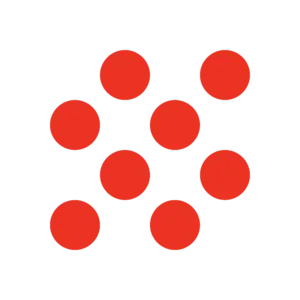Safety grading RED – UNSAFE
Cyclamates (E952) comprise cyclamic acid and its salts, most commonly sodium and calcium cyclamate. At the regulator baseline, the picture is split. The European Union authorises E952 with maximum use levels and has historically applied an Acceptable Daily Intake (ADI) of 7 mg/kg body weight. In contrast, the United States Food and Drug Administration does not approve cyclamates for food use and lists them among substances prohibited from use in human food. A ban in a major jurisdiction does not, by itself, prove harm at permitted European levels, but it signals an unresolved regulatory divergence that consumers should consider.
In the global evidence sweep, cyclamates show low acute toxicity and good technological performance, however, a portion can be transformed by intestinal bacteria into cyclohexylamine. This metabolite is biologically active and, in animal studies at high doses, has been associated with effects on the testes and other endpoints. Earlier rodent studies using mixtures of cyclamate and saccharin reported increased bladder tumours under extreme dosing conditions that do not reflect normal intake, yet these signals contributed to precautionary restrictions in some countries. More recent evaluations retained an ADI while emphasising uncertainties related to conversion rates to cyclohexylamine, inter‑individual variability, and limited long‑term human data.
Our net‑risk judgement is therefore precautionary. Cyclamates remain legally used in many countries, but the combination of a long‑standing U.S. ban, mechanistic concerns linked to the cyclohexylamine metabolite, and the possibility that high consumers (for example, children who frequently drink diet beverages or people who use multiple sweeteners daily) could approach the ADI supports a conservative stance. For general readers seeking a simple rule of thumb, we assign E952 a RED – UNSAFE grade on this site. Occasional, low‑level exposure within EU limits is unlikely to pose a material risk for most healthy adults, and risk depends strongly on dose and frequency. People with specific medical conditions or those responsible for children’s diets should apply extra caution.
Should You Avoid E952?
If you regularly consume diet soft drinks, sugar‑free confectionery, or table‑top blends that contain E952, reducing or avoiding intake is sensible. Choosing products without intense sweeteners or using alternatives with stronger regulatory consensus can reduce uncertainty. Parents and caregivers should monitor children’s cumulative intake from beverages and sweets. Individuals managing reproductive health, kidney issues, or gut microbiome disturbances should be particularly cautious because metabolite formation depends on gut bacteria.
Common Uses
- Low‑ or no‑calorie soft drinks and flavoured waters where permitted.
- Sugar‑reduced confectionery, chewing gums, and desserts. Often blended with saccharin to improve taste.
- Table‑top sweeteners and liquid drops for hot beverages.
- Some syrups or processed foods that require heat‑stable sweetness.
Common names / Synonyms
- Cyclamic acid
- Sodium cyclamate
- Calcium cyclamate
- Cyclamate
- INS 952
- Sweetener E952
What is it?
Chemically, cyclamates are salts of cyclohexanesulfamic acid. The sodium and calcium salts are highly water‑soluble, heat‑stable, and approximately 30–50 times sweeter than sucrose depending on the food matrix. They have been used since the mid‑20th century, often in a 10:1 blend with saccharin to mask bitterness and deliver a more sugar‑like sweetness profile. These properties explain their popularity in diet beverages and sugar‑reduced confectionery in countries where use is authorised.
After ingestion, a fraction of cyclamate is excreted unchanged, while another fraction can be converted by certain intestinal microbes into cyclohexylamine. Toxicological assessments therefore evaluate both the parent compound and this metabolite. Safety dossiers note that cyclohexylamine shows greater biological activity and, in animal studies at sufficiently high doses, can affect the testes and other organs. Human data remain limited, so regulators rely on margins of exposure and ADI values that incorporate uncertainty factors. In practical terms this means typical consumers are expected to stay well below the ADI, yet high consumers could draw nearer to it, particularly when multiple intense sweeteners are used together across several daily products.
From a manufacturing standpoint, cyclamates are classed as intense sweeteners within food additive legislation. Specifications cover identity, purity, and contaminants. Because taste synergy is important, cyclamates are commonly formulated with other sweeteners. Their technological advantages include good stability across pH and temperature ranges and a relatively clean sweetness at moderate concentrations.
Where it’s allowed (EU vs US)
European Union: E952 is authorised in specific food categories with maximum levels, and an ADI has been established based on cyclamic acid equivalents.
United States: Cyclamates are not approved for food use! The FDA lists cyclamate and its salts among substances prohibited from use in human food.
Further reading
- Study: Toxicity of food sweetener – sodium cyclamate on osteoblasts cells
- EFSA – Sweeteners – E952 Cyclamates Re-evaluation ongoing: topic page and re‑evaluation updates
- JECFA database – Cyclamic acid (toxicology and ADI)
- FDA eCFR §189.135 – Cyclamate and its salts (U.S. prohibition)
- PubMed search – “cyclamate”
- Wikipedia – Cyclamate overview
